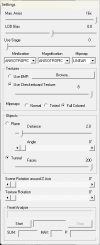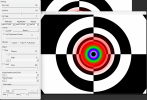2 meters or so, purchased on a big mall in the videogames section -they don't place those in the section where the other typical cables like HDMI 2.0 or Ethernet are-. It wasn't cheap tbh.Is it a decent quality cable? How long is it?
So after contacting Intel the thing is that the sole fact games don't even launch just because you are using a TV connected to your "HDMI 2.1" output but run like a charm using a classic monitor via Displayport says that something is amiss.
It turns out that the card's HDMI is not a native HDMI 2.1 port, it's converted from DP via LSPCON.
This is why people aren't seeing the option to select 10/12bit color etc in the Intel Graphics Command Center. Explained by Intel:
Unable to enable 10bpc on Monitor while using Intel ARC graphics, unless HDR is enabled · Issue #179 · IGCIT/Intel-GPU-Community-Issue-Tracker-IGCIT
Checklist [README] Device is not undervolted nor overclocked Device is using the latest drivers Application is not cracked, modded and use the latest patch Application [Required] All applications. ...
Last edited:










